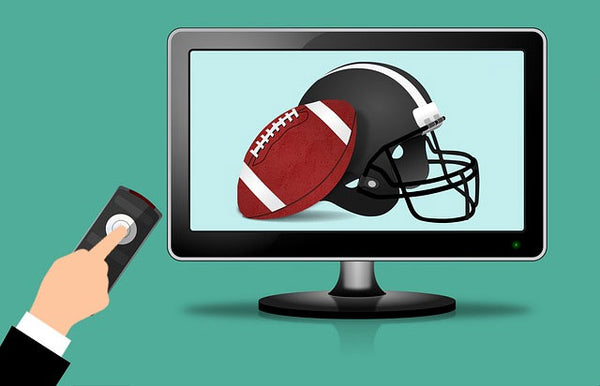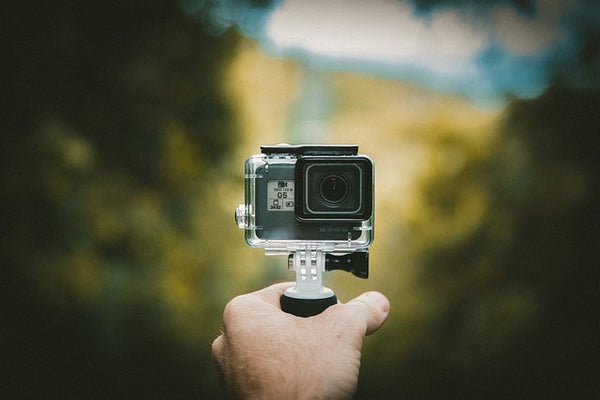Finally, GoPro has simplified its lineup and launched only one new camera, the Hero 8 Black. Previously, GoPro would launch many different iterations (Black, Silver, White) which often left people wondering which camera to get and if the more expensive ones were worth it. Generally, the Black editions offered significant improvements over the Silver/White so it’s nice to see GoPro simplify their offering and develop only one high-quality new camera.

The new camera has some nice improvements over the Hero 7 Black that we've grown to love for many reasons. The Hero 7 Black is truly amazing for casual users and even great for professionals. The Hero 8 Black can be seen as an improved version of its predecessor instead of an all-new camera. Sort of like Hero 7+ Black. Nonetheless, it’s got some new feature tech-savvy adventurers and more advanced GoPro users will appreciate.
The big question is if it’s worth upgrading? We’ll get into that. But first, let’s go over everything that is new about the Hero 8 Black.
On the outside, the camera looks pretty similar to the former Hero 5/6/7, although there are some subtle changes. We’ll highlight all the physical hardware changes before going over all the updated shooting modes and features.
Hero 8 Black hardware updates
Sleek and rounded form factor

The new GoPro Hero 8 shape is slightly bigger and more rounded than the previous generations (GoPro Hero’s 5/6/7). The look is maybe a little more playful while still keeping with what we’ve become accustomed to. The enclosure for the camera glass has been redesigned and the glass can no longer be replaced should you break it. However, GoPro did update the glass to corning gorilla glass which they claim is twice as durable. While we’ve never actually broken the glass on any of our GoPro’s, folks who have had that happen will surely sigh at the new design. Meanwhile, there is better protection for the rear LCD thanks to a small overhanging lip on the housing. All in all, the new camera is 14% lighter than it’s predecessor, but we doubt anyone will really notice the difference.
Built-in mounting fingers

The next update makes a lot of sense. The mounting fingers which were formerly on the camera cases or frames have now been included in the camera body and fold out of the bottom. The folding fingers actually pretty sweet because it’ll pack better when putting it in your pocket or bag like the Hip Pack for GoPro. The mountings fingers always seem to get snagged or caught on something. It’s kinda crazy to think it took 8 GoPro versions for this simple feature, but here we are.
Updated access port

GoPro scrapped the two-port design on the Hero 5/6/7 and has combined everything into one access port. This is cool because it means there is less confusion about which door contains the memory card and which one has the charging port. Fumbling between the ports is a small annoyance, but it’s still nice nonetheless that everything is contained in one spot with the new design. The second reason this is great is it means one less spot where water can get in. Having lost a GoPro Hero 5 unexpectedly to water damage with the old two-port design, this is something we’re conscious about. The sealing gaskets are very small on these ports so having one less port is one less thing to worry about around water. The port is located on the side of the camera which means you can access the battery, memory card, or even charge the camera while it’s mounted on your favorite selfie stick or tripod for GoPro.
New microphone placement

Similarly to the Hero 7 Black, there are three microphones on the Hero 8 Black. However, they have updated the positions of the microphones. There is now a microphone on the front of the camera, below the fingers and on the side. The new placement supposedly improves the audio quality and reduces the wind noise so you get natural audio even at high speeds.
New expansion mods
There are three new expansion mods which are essentially add-ons to deck out the Hero 8 for vlogging. The expansion mods will be available for pre-order starting December 2019.
Media Mod - $79.99

The Media Mod is the base accessory which the two other mods add onto. It attaches onto the Hero 8 Black and contains a built-in directional mic for better audio. There is an HDMI-out port for watching on a TV, a USB-C port for charging/data transfer, a 3.5mm mic port that eliminates the need for an adapter to attach an external mic (required for Hero 5/6/7) and 2 cold-shoe mounts for attaching the other GoPro mods or an external microphone. The Media Mod does not appear to be waterproof, although we’ll find out more details when it comes out.
Display Mod - $79.99

The Display Mod is a 2-inch flip-up display that attaches onto the Media Mod to provide you with a screen to see what you’re filming while vlogging. It’s a nice add-on if you’re dead set on using a GoPro for vlogging. The Display Mod contains a rechargeable battery (one more thing to charge, sigh) and a micro HDMI connector. It folds down to cover the native GoPro screen when it’s not being used for vlogging. Time will tell if GoPro is able to better penetrate the vlogging community with these products.
Flip-up/out displays are fairly common with mirrorless cameras and DSLR, although these are typically quite a bit more expensive than GoPro cameras. DJI, now one of GoPro’s largest competitors shocked the world when it launched its own action camera called the Osmo Action which has a small screen for vlogging on the front of the camera. While the Osmo Actions is only $349, the GoPro Hero 8 Black with the Media Mod and Display Mod will run you a total of $559. Given the price difference and DJI’s reputation, the Osmo Action is certainly a worthy competitor to check out before buying a new action camera.
Light Mod -$49.99

The Light Mod is a small light to brighten the subject while vlogging. It offers 4 levels of brightness with a max brightness of 200 lumens and has a max runtime of 6 hours. The light is actually waterproof to 33 feet (10m) which is pretty cool for scuba diving or any night time underwater activities. However, the Media Mod that the Light Mod attaches to does not seem to be waterproof which definitely limits the usefulness of the Light Mod. In comparison to competing products like the Lume Cube, the Light Mod is a lot less bright. The Lume Cube ($59.99-69.99) has a max brightness of 1500 lumens which is impressive although it’s about twice the size of the Light Mod.
It’s definitely interesting to see GoPro develop some native accessories alongside the new camera. That’s a wrap for the hardware updates to the Hero 8 Black.
New shooting modes
Let’s jump into all the new shooting modes and software updates for the Hero 8 Black.
Quick note: There is no change to the resolutions and frame rates capabilities from the Hero 8 Black to Hero 7 Black. While some might be disappointed, the current capabilities (4K 60 FPS, 1080P 240FPS) are seriously impressive and will easily delight any casual or even expert users.
Hypersmooth 2.0
Hypersmooth is what GoPro calls its electronic image stabilization. It was originally released with the Hero 7 Black (see our review) and is honestly one of the most noticeable GoPro improvements ever. In the past, Hypersmooth wasn’t available on more demanding shooting modes like 1080P | 240 FPS, 1440P | 120 FPS and 4K 4:3 | 30 FPS (learn what these settings mean here). For the Hero 8 Black, GoPro made Hypersmooth 2.0 available on all shooting modes which is awesome for advanced GoPro users.
It now has three levels of stabilization: On, High and Boost. On is the default mode which most adventurers will probably find sufficient. For really bumpy activities like mountain biking, dirt biking or atving, High and Boost mode can be used for the most stable footage. However, these modes will noticeably crop the image. For static shots, you can turn Hypersmooth 2.0 off and capture the widest image possible. The last update on stabilization is a new in-app horizon leveling tool that will automatically level the horizon of the video within the GoPro app.
TimeWarp 2.0
TimeWarp was also a fun new feature originally released on the Hero 7 Black. TimeWarp is basically GoPro’s video timelapse mode. Previously you could select different fast-forwarding speed levels such as 2X, 5X and 10X depending on the kind of activity you were doing and the speed at which you wanted the video to playback.
Bonus content: How to make a GoPro travel video in 3 easy steps
What’s new in TimeWarp 2.0 is that it will automatically adjust the speed level to the speed at which you’re traveling, while allowing you to slow it down or speed it up with a tap of the camera. The ability to change the speed of the timelapse while recording is pretty cool. For example, while skiing you could record your run at 5X speed, slow it down to show your friends going off a jump and then speed it back up while you finish the run. TimeWarp 2.0 also includes a Night Lapse Video mode whereas the Hero 7 Black only had a Night Lapse Photo mode.
Liveburst
Liveburst is a new and improved burst shooting mode that captures 1.5 seconds worth of photos before and after you hit the shutter. It allows you to pick between 90 still images or share a 3-second 4k video clip. This new mode is useful for super fast action shots like any kind of jumping (ski jumps, cliff jumping, etc…). For users who are comfortable editing in Lightroom, it also allows you to take up to 30 RAW burst photos (Wide FOV only) which is definitely impressive for super high quality close up action shots.
Digital Lenses

Digital lenses are essentially the new fancy name for the FOV (Field Of View) settings on the Hero 8 Black. There are four settings to choose from: SuperView, Wide, Linear, and Narrow. The only mode that is new is Narrow, which basically just crops the image more than in Linear mode. Find out when to use these modes here. One convenient new update is that you can easily cycle through the different modes to get a live view of how the FOV changes the cropping of the shot. Have a look at Micbergsma's video to see how much the framing changes. The narrow digital zoom almost asks a zoom! Lastly, folks who shoot in 4K will be happy to know that you can now shoot in 4K Linear for a more cinematic look.
Video presets
GoPro developed some handy video presets which allow you to quickly change from one shooting mode to another. Here are a few of the included modes:
Cinematic (4K | 30 | Linear)
Activity (2.7K | 60 | Superview)
Slo-mo (1080P | 240 | Wide)
Standard (1080P | 60 | wide)
The best part about the new presets is that you have the ability to create and name your own custom preset. You bet we’re making a new preset for our favorite shooting settings! There is also the new ability to customize some on-screen shortcuts should you like to do specific sequences while using the camera.
Superphoto has improved HDR
The new Superphoto mode reduces blur, provides more detail in low light areas and offers higher contrast than previous versions. Photos shot using Superphoto basically come out looking sort of pre-editing with a sharp, high clarity look.
Lifestream to Facebook in Full HD
The Hero 8 Black can now Livestream to Facebook in full HD (1080P) whereas the Hero 7 Black was limited to 720P. The Livestream functionality isn’t limited to Facebook either, you can use it on YouTube, Twitch, Vimeo, and a few other platforms. Keep in mind, you need WiFi or to teether from your phone if you plan to Livestream and it won’t work while underwater.
Higher bitrate on certain modes
For adventurers who want the absolute best-looking footage, GoPro has enabled 100 Mbps (previously 78 Mbps with the Hero 7 Black) bit rate when shooting in 2.7K and 4K. If you don’t know what that is, you probably don’t need to use it ;)
Bonus content: GoPro Protune Settings: Everything You Need To Know Before You Shoot With It
Grid

There is finally a grid when shooting to help you level and better compose your shots. With a gird, it’s super easy to apply the rule of thirds. Nice!
That’s a wrap on all the updates for the new Hero 8 Black. As you can see, many of the updates are incremental improvements over the previous generation. That’s totally cool though because the Hero 7 Black is already a wicked camera.
Notable mentions: GoPro Max
GoPro also launched a successor to the GoPro Fusion 360 degree camera called the GoPro Max. The Max has many of the same new features such as Max HyperSmooth, Max TimeWarp, and Digital Lenses. This new version allows you to shoot with only one camera if you want, or use both cameras for 360 videos. The Max also has a screen so you can view what you’re filming. The price point for the Max is $499.99, which is much more reasonable than the price of the Fusion when it first launched ($799.99). Regardless, we’ve found 360 cameras to be too complicated for everyday adventurers particularly when it comes to editing and we’re skeptical if 360 videos will ever become mainstream.
So, is it worth upgrading to the Hero 8 Black?
If you have the following GoPro:
- Hero 7 Black: it’s not worth upgrading unless you’re a really hardcore user. Casual users will likely not find much difference between the basic modes on the Hero 7 Black and 8 Black.
- Hero 6: it might be worth upgrading as the new user experience, stabilization and shooting modes are impressive in comparison. Consider how much you plan on using the camera and how much you care about the quality of what you can capture when making a decision.
- Hero 5 or below: it is absolutely worth upgrading if you plan on using your GoPro regularly. The image quality and most importantly the stabilization has significantly improved since these cameras were released. So if you want really good footage, it’s worth upgrading because you’ll definitely notice a difference in quality.
GoPro launches a new set of cameras every year. This year's new products offer some solid incremental improvements, but we’ll need to wait until next year for some more breakthrough products. You can count on Spivo to cover those when they come out!
If you found this blog helpful, subscribe to our weekly newsletter The Adventurist where we share tons of tips and resources for GoPro adventurers.





Leave a comment